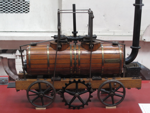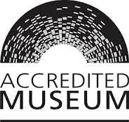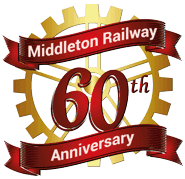Museum
Rolling Stock - Steam Locomotives
Steam locomotives, which are powered by burning coal to produce steam in the boiler, are the oldest form of locomotive technology. They provided the main power sources for railways up until the 1960s, and the collection here illustrates many of the key features of steam locomotives that were used on industrial railways.
Each steam locomotive in our collection has what we call a 'Middleton number', which isn't shown on the locomotive, but it is used in fleet lists and on the display panels in the Engine House to identify the locomotives. In the list below this number is shown in square brackets.
The locomotives themselves are identified by the name of the builder and the 'works number' which the builder allocated to it when they built it. In addition, many of these locomotives carry what are usually called 'running numbers', and these are given here in single quotes, while others carry names, and these are given here in double quotes. Unlike main line locomotives, however, very few industrial locomotives carried both running numbers and names, although often the running numbers did also include the name of the company that owned the locomotive.
Most of the information given on the pages for each locomotive should be self-explanatory, but you may wonder about the meaning of a description such as "0-6-0ST". The first part of this is the arrangement of the wheels, where the first digit is the number of carrying wheels at the front (usually 0 for our locomotives), the second digit is the number of driving wheels, and the third digit is the number of carrying wheels at the back (again, usually 0 for our locomotives).
Then, the letters after these digits mainly indicate how the locomotive's water is carried: ST stands for Saddle Tank (ie over the top of the boiler); T stands for side Tank (ie alongside the boiler); and WT for Well Tank (ie underneath the boiler, between the frames). The other letters that may appear are VB, which stands for Vertical Boiler, or G, which stands for Geared (meaning that the pistons drive the wheels through gears rather than directly).
The following steam locomotives are in our collection.
- [S1] Sentinel 8837 '68153';
- [S3] North Eastern Railway '1310';
- [S5] Hudswell-Clarke 1309 "Henry De Lacy II";
- [S6] Hawthorn Leslie 3860 'No. 6';
- [S7] Hartmann 2110 'Hs 385';
- [S8] Peckett 2003 "John Blenkinsop";
- [S9] Manning Wardle 1601 "Matthew Murray";
- [S10] Hudswell-Clarke 1882 "Mirvale";
- [S11] Peckett 2103;
- [S13] Hunslet 2387 'Brookes No. 1';
- [S14] Manning Wardle 1210 "Sir Berkeley";
- [S15] Kitson 5469 '44', "Conway";
- [S16] Hunslet 1540 "Picton";
- [S17] Hunslet 1684 "Mendip Collier";
- [S19] Hunslet 1493 'No. 11';
- [S20] Hudswell-Clarke 1369 'M. S. C. No. 67';
- [S21] Hudswell-Clarke 1544 'Slough Estates No. 3'
The pages for these locomotives give a brief overview of our collection, but for more information about each one our stock book is available in the shop. Click here for more details of this.
Return to the page for our museum collection.
More Information
Pages about other categories of museum exhibits:
Other pages provide more information about:
Rolling Stock - Diesel and Electric Locomotives
Diesel locomotives, which are powered by diesel engines, began to be developed as an alternative to steam locomotives in the 1930s. The earliest ones were not very powerful, and it was not until 1932 that the Hunslet Engine Company produced the first one that was suitable for any kind of main line operation - and this is now in our collection. In the same year Hudswell-Clarke also produced some comparable locomotives, and one of those is in our collection, too. Thus, our collection here illustrates many of the key features of the development of diesel locomotives for use on industrial railways.
By contrast, industrial railways made comparatively little use of electric locomotives, because of the safety concerns over having either live rails or overhead wiring in typical industrial sites. One of the few situations where they were used successfully was in coking plants, where the locomotive simply had to shunt the coking car backwards and forwards under the retorts, and so it was possible to feed the power via a cable which could be wound in and out to match the movement of the locomotive. We have an example of one of these in our collection, too, although it is still waiting for restoration, and so is not on display.
The following diesel and electric locomotives are in our collection. For each one the number in square brackets is the locomotive's 'Middleton number', which (as for the steam locomotives) isn't displayed on the locomotive, but it is used in fleet lists and on the display panels in the Engine House to identify the locomotives. Then the locomotives themselves are identified by the name of the builder and the 'works number' which they allocated to it when they built it. Some builders just used the same series of numbers for both steam and diesel locomotives, while others used a separate series of numbers for diesel locomotives.
Also, as with the steam locomotives, many of them carry what are usually called 'running numbers', and these are given here in single quotes, while others carry names, and these are given here in double quotes. Unlike main line locomotives, however, very few industrial locomotives carried both running numbers and names, although often the running numbers did also include the name of the company that owned the locomotive.
- [D1] Hunslet 1697 '7051', "John Alcock";
- [D2] Fowler 3900002;
- [D3] Hunslet 1786 "Courage";
- [D4] Hudswell-Clarke D631 "Carroll";
- [D5] Hudswell-Clarke D577 "Mary";
- [D6] Brush/Beyer Peacock 91;
- [D8] Drewry RDB998901;
- [D9] Greenwood & Batley 420452;
- [D10] Peckett 5003 'Austins No. 1';
- [D11] Fowler 4220033 "Harry";
- [D13] Hunslet 6981 'Phillips 66';
- [D14] Hudswell-Clarke D1373 'Mersey Docks and Harbour Board No. 45'.
The pages for these locomotives give a brief overview of our collection, but for more information about each one our stock book is available in the shop. Click here for more details of this.
Return to the page for our museum collection.
More Information
Pages about other categories of museum exhibits:
Other pages provide more information about:
D9: Greenwood & Batley 420452
0-4-0 electric coke oven locomotive
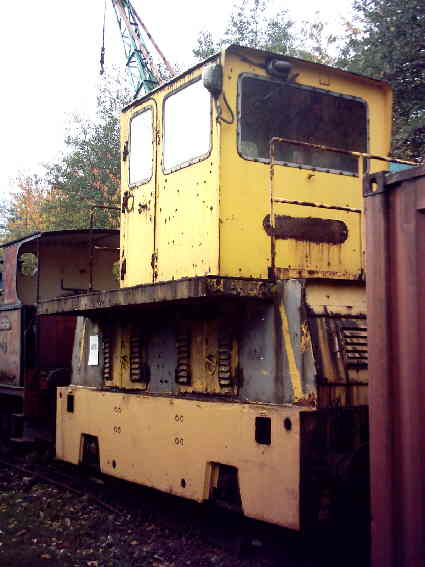
| Built | 1979, at Leeds |
| Weight | 20 tons 0 cwt |
| Length over buffers | 16' 10" (approx 5.1 m) |
| Driving wheels | 2' 10" diameter (approx 80 cm) |
| Motors | Two at 230V, total 50 hp |
| Previously worked | Monckton Coke & Chemical Co. Ltd, Royston |
| Entered collection | Donated by Monckton Coke & Chemical Co. Ltd in 2003 |
| Current status | Awaiting cosmetic restoration |
More details of this locomotive are given in our stockbook.
Go on to diesel locomotive D10: Peckett 5003.
Go back to diesel railcar D8: Drewry RDB998901.
Return to the list of diesel and electric locomotives.
More Information
Other pages provide more information about:
S21: Hudswell-Clarke 1544
0-6-0ST steam locomotive "Slough Estates No. 3"
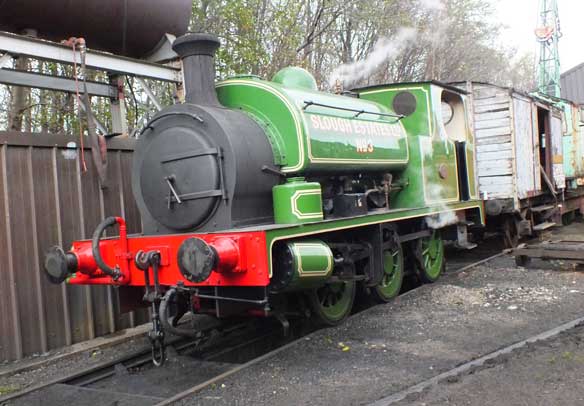
| Built | 1924, at Leeds |
| Weight | 32 tons 10 cwt |
| Length over buffers | 25' 7" (approx 7.8 m) |
| Driving wheels | 3' 3½" diameter (approx 100 cm) |
| Cylinders | 2 (outside), 15" diameter (approx 380 mm) |
| Previously worked | Slough Trading Estate |
| Entered collection | Purchased by the Slough & Windsor Railway Society in 1992, and on loan to the MRT since 2011 |
| Current status | Awaiting overhaul |
More details of this locomotive are given in our stockbook.
Go back to steam locomotive S20: Hudswell-Clarke 1369.
Return to the list of steam locomotives.
More Information
Other pages provide more information about:
S20: Hudswell-Clarke 1369
0-6-0T steam locomotive 'M. S. C. 67'
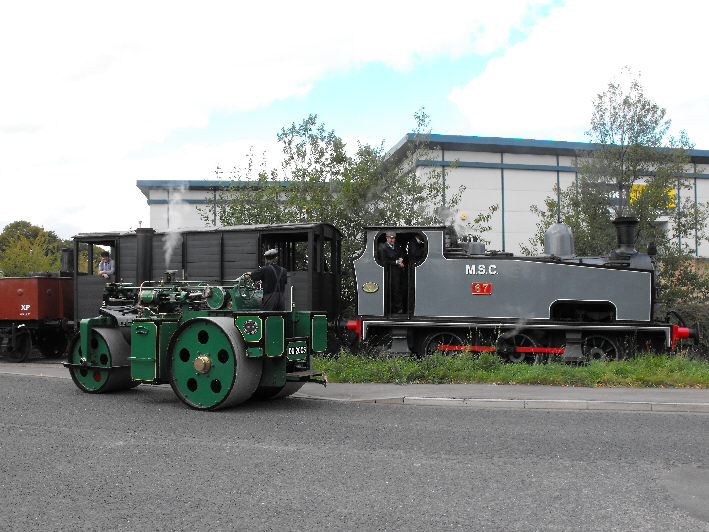
| Built | 1919, at Leeds |
| Weight | 33 tons 19 cwt |
| Length over buffers | 24' 4" (approx 7.4 m) |
| Driving wheels | 3' 4½" diameter (approx 103 cm) |
| Cylinders | 2 (inside), 15½" diameter (approx 393 mm) |
| Previously worked | Manchester Ship Canal |
| Entered collection | Purchased privately in 1969, and donated to the MRT in 2012 |
| Current status | On display but not operational |
More details of this locomotive are given in our stockbook.
Go on to steam locomotive S21: Hudswell-Clarke 1544.
Go back to steam locomotive S19: Hunslet 1493.
Return to the list of steam locomotives.
More Information
Other pages provide more information about:

